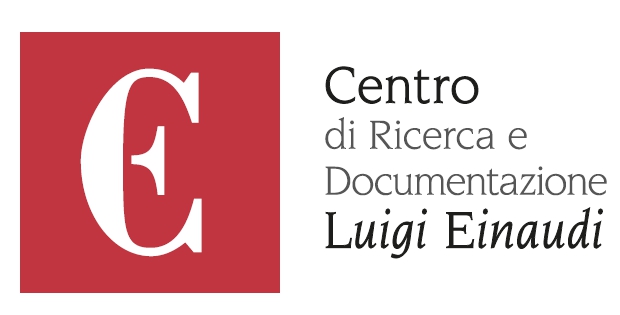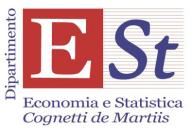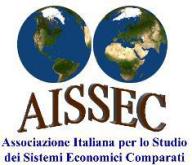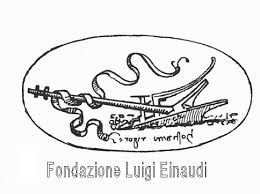Giorgia D'Alba (Laureata presso l’Università di Torino)
In the recent years Peru was defined “the rising star” of the Latin American continent by International Monetary Fund (IMF) due to the economic stability, low inflation and steady growth recorded by the country over the past 20 years. Nevertheless, nowadays the Peruvian economy is waning as a result of an ongoing period of political instability - characterized by persisted constitutional crisis - in conjunction with the consequences of Covid-19 on the global and local economy.
POLITICAL BACKGROUND
Over the last 2 years, Peru has been in the middle of international political debates following a series of presidential resignations, which led to violent popular protests.
The outset of Peruvian political crisis dates back to 2018, when the erstwhile President Pedro Pablo Kuczynsky (likewise known as PPK) resigned the office after 2 years in power, handing the reins of the country to his Vice President Martín Vizcarra.
PPK's presidency was at risk from the beginning as the President could only rely on 18 representatives in a 130 seat Congress. In such circumstances, was unlikely to enjoy the conditions needed to run a lasting and successful administration. The spectre of impeachment had been hovering over the presidency. The biggest issue Kuczynsky faced was the allegation that he had received bribes from a Brazilian construction firm, Odebrecht, during his time as Prime Minister under former President Alejandro Toledo. Even now, Odebrecht is at the centre of Latin America's biggest corruption scandal that has involved governments and political parties of 12 countries of the region (France 24, 2018).
PPK has been impeached for the Odebrecht affair by the Peruvian Congress, who, however, did not manage to obtain the votes needed to incriminate him, because the President had received the endorsement from congressman Kenji Fujimori (former dictator's son). The abstention of the Fujimorista wing was rewarded by the presidential pardon granted to Alberto Fujimori (indicted for corruption and human rights violations). After further scandals, there was a second impeachment process against PPK , and the dissemination of videos and audio showing alleged acts of vote-buying to knock it down. Thereupon, Kuczynski resigned the presidency on 21 March 2018 (Rosen, 2017).
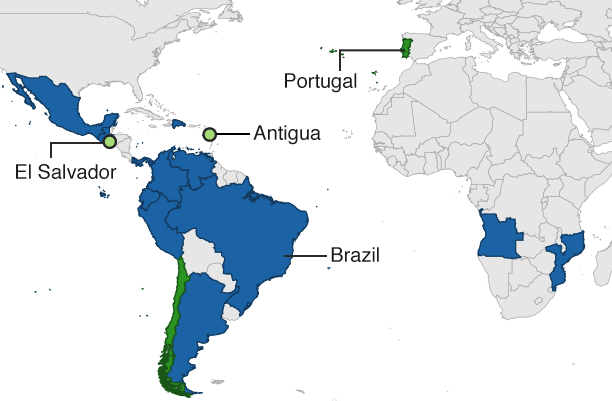
Figure 1 Spread of Odebrecht scandal. Source: BBC
Vizcarra's presidency did not lessen the struggle among the executive and the legislature. Analogously to his predecessor, Vizcarra could not count on the majority in the Congress thus, given this legislative impasse, he dissolved the chambers and call an extraordinary election on January 2020. Nevertheless, the latter provided him with a fragmentary congress. The president has persisted in his legislative agenda by attempting to get approval on an anti-corruption law (which had overwhelming public support) that certainly would have affected relations between the political and business world. The same congressmen that would be affected by this law tried to impeach Vizcarra for ‘moral incapacity’, accusing him of having accepted bribes during his time as Governor of his home town Moquegua (2011 – 2014) (El Periódico, 2020). It is important to remark that a significant portion of Congress has agreed to remove the president with unproven allegations, even if the country was facing Covid-19 pandemic, with over 30.000 Peruvians deads and an economy projected to set for 12% plunge (Aquino, 2020). Although the President has pleaded not guilty and the Peruvian Justice System has not (yet) charged him for this case, Martin Vizcarra preferred to resign on 9 November 2020 - a few months before the general election, planned for April 2021. Consequently, he was replaced by the head of Congress, Manuel Merino (a member of one of the four right-wing political groups who voted for the impeachment trial).
The interim President Merino was expected to lead the country to next presidential elections in April. However, the social context was unfavourable due to the pro Vizcarra protests (the biggest street demonstrations since the downfall of the authoritarian President Fujimori). Furthermore, at home and abroad analysts were questioning the legitimacy of the new administration (El Economista América, 2020). After being in office for only five days, marked by clashes between protesters and police, Merino resigned (BBC Mundo, 2020). On 16th November, Peruvian Congress elected Francisco Sagasti, an engineer and academic in his first term, to lead Peru until the election (Collyns, 2020). As protesters had been demanding, Sagasti was chosen amid the few deputies who voted against Vizcarra's ousting. The new acting President is unlikely to achieve any significant outcomes to Peru’s economic and political problems. With only 8 months in office and the economic recession to contend with, it is likely that the challenge of pushing through anti-corruption reforms will be delegated to the next president. Presumably, Sagasti’s administration will focus on creating the environment for a smooth political transition.
MACROECONOMIC SITUATION
With the outbreak of the Corona Virus and the ongoing constitutional crisis, some of the country's deep-rooted problems finally came to the surface, hidden for years by macroeconomic success. Notwithstanding in the last two decades Peru has been one of the fastest-growing economies in the region and enjoyed macroeconomic stability, in the present-day the country is distinguishable by a huge informal workforce with limited access to the banking system and an underfunded public health system, one of the worst in Latin America.
Between 1999 and 2018, Peru achieved GDP growth at an average annual rate of 5% without experiencing any recession. This was achieved thanks to the so-called Commodity Boom. During this period, the prices of commodities like oil and metals increased as a result of growing demand from emerging market economies, in particular China and India. Consequently, South America - as a producer of raw materials - experienced a boost in its terms of trade. In the same years, growth averaged about 4% a year, well above the rest of Latin American with a 1.75 %. All along with the Commodity Boom, Peru's economy grew fast, thanks to a strong mining sector, an open economy, and growing agro-industry sector.
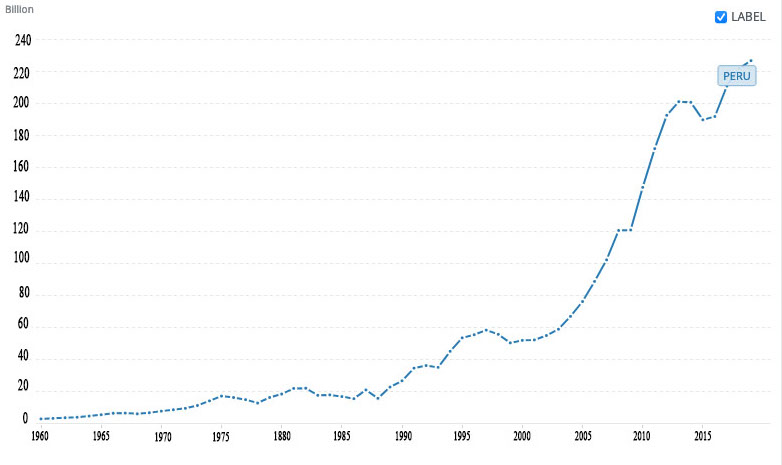
Figure 2 Peru's GDP (billion USD). Data from World Bank
An additional reason for the country's growth was the implementation of structural reforms that enhanced economic efficiency and productivity. In 2015, Peru’s GDP was the sixth largest in the region, it was around $195.4 billion, which became $222 billion in 2018 (Oxford Business Group). The sudden development facilitated the reduction of the share of the population living in extreme poverty: in 1997 it reached 18% whereas in 2018 it decreased up to 2.7% (World Bank). Over those years, approximately a third of the population moved into a new middle class. Nonetheless, the data continue to highlight a deep divide between the poverty rate in the urban area (15%) and rural ones (53%) (Sace Simest, 2019).

Figure 3 Poverty headcount ratio at $1.90 a day. Data from World Bank
The challenge for Peru has always been to make its economic growth sustainable over time. To achieve this goal the country has to combat corruption, diversify its economy and invest in infrastructure.
According to some analysts (Apan), Peru could potentially serve as a case study to investigate the repercussions of corruption in a developing nation. Although the most affected country by Odebrecht case was Brazil, Peru’s economy is also facing the effects. In fact, in the Andean country, the firm has been involved with several important infrastructure projects with contracts worth billions of dollars but a considerable number of them were put on hold, following the corruption revelations. As a consequence, the sector collapsed affecting hundreds of public works, or 4,2% of GDP, and more than 150,000 jobs.
Even if Odebrecht case is the most important corruption event due to the relevance of the actors involved - former presidents Alejandro Toledo (2001 - 2006), Alan García (2006 – 2011), Ollanta Humala (2011 – 2016) and Pedro Pablo Kuczynsky (2016 – 2018) - the issue of corruption in the country is much more deep-rooted. In 2017, Transparency International (Transparency International, 2020) listed Peru as the 5th most corrupted country in South America. According to the investigation, the damages caused by corruption correspond to 10% of the Peruvian General Budget. In other words, the country loses $4 billion per year because of it.

Figure 4 Evolution of non mining sectors production by GDP Source: Banco Central de Reserva del Perú - BCRP
Diversification must become one of the strengths of the Peruvian economy, to reduce the country’s exposure to volatility of the mining sector prices, since mineral commodity export still represents 54% of Peruvian trade (International Monetary Fund, 2020).
Even though Peru is a commodity producer, over the last years it has experienced an agro-exporting boom, reaching around 2.7% of GDP in 2019 (in 2001 it was 0.4%). Considering that the agro-exporting sector provides 0.8 million formal agricultural jobs (unlike the traditional agriculture) and supports indirectly another 0.7 million jobs with high productivity and incomes, the boom has also contributed to poverty reduction.
Concerning the agro-business, one of the aims pursued by the Vizcarra's administration was to boost industrialization, in order to enable the country to engage in raw materials processing and value addition. Aiming to reach this objective, Peru has to reduce its infrastructure gap ($160 billion) so as to curtail the high transportation costs of products from the country's rural areas to the target markets (Sace Simest, 2019).
Infrastructure system is essential for a country's economic development, it can improve health, access to education and public safety. Years of stable economic expansion have given Peru a huge opportunity to provide beter infrastructure to support its underdeveloped industries but regrettably, for decades now, country has seen stifled infrastructure investments by corruption.
CORONAVIRUS CRISIS
The Coronavirus pandemic has pointed out several failures, in particular in the health system. Theoretically, Peru has the capacity to face the emergency, but the neglect for the sector of the last 20 years cannot be straightened out in a few weeks. The mismanagement of the national health service is not attributable to one political colour: the health system has been put on the back burner and the Coronavirus is highlighting the fragility of the country's economic progress.
During the economic boom, a considerable sum of money that should have been invested in the health sector was lost through inefficiency and corruption. A substantial part of this money went to regional and local governments unable to implement the required changes. In addition, the main obstacle with reforming the national health system concerns the high political cost of such a reform. Health expenditure does not generate short-term returns: what is started by one government will almost certainly end up benefiting another administration. In the last three years, despite growth in public spending, the budget allocated to Department of Health has been limited: in 2018 it was $4.8 billions and in 2019 it only increased of 13.7% ($5,4 billion). The budget is gravely inadequate - the average investment in health is only 4 percent of GDP- one of the lowest in South America (International Trade Administration, 2020). Undeniably, government instability is also to blame: Peru has seen 7 different Ministers for Health in just 4 years.
In March 2020, with the spread of Coronavirus, the Peruvian government declared a state of health emergency; this has implied a strict mandatory quarantine. Despite this measure being taken in advance of other Latin American countries, Peru counts more than 900 thousand infected (Worldometer) as a consequence of a flaw in the whole isolation system, mainly due to the fact that 71% of the Peruvian population relies on informal jobs for their daily income (Soave, 2020).
For developing countries such as Peru, the economic implication of Covid-19 is twofold: besides an external shock, that implies a contraction in the prices of raw materials, in the demand for exports, employment, income, tourism, international remittances and external financing, is also present an internal one that affects aggregate supply and demand (as a result of the quarantine) (Varona, Gonzales, 2021).
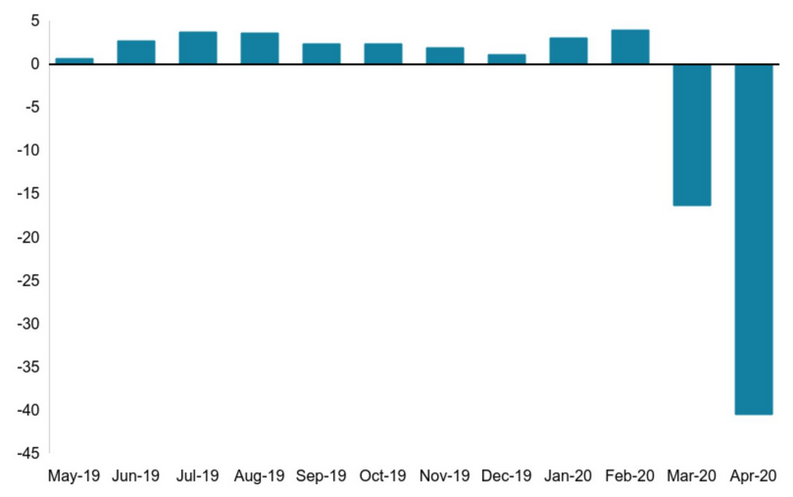
Figure 5 Source: Peru's statistic agency Inei
Peru’s economy sank by more than 40% year-on-year in April, its worst-ever percentage drop in output. The more drastic decline was in the second quarter, explained by the decrease of 27.7% in domestic demand and the negative performance of exports (-40.3%) (Inei, 2020) . The freeze of all productive activity, with the exception of essential food, medical and financial services, has also seen some 6.7 million job losses nationwide. Upon proposal of the former Finance Minister Alva, Peru has adopted one of the 'most aggressive economic aid packages in the world' - quoting The Wall Street Journal (Dube, 2020) - compared to the size of Peru's national economy. These five key measures, designed to tackle the Coronavirus crisis, are planned to increase public spending and tax breaks and provide a range of loans to struggling businesses.
The data for November and December 2020 on the country's productive activity showed that Peru's economy is recovering. For 2021 ECLAC (2020) has projected economic growth for Peru around 9%. If it happens, it will become the country with the highest economic recovery in the region, after having led the ranking of the worst regional performance in 2020 (after Venezuela). At the moment, the Peruvian economy has registered a slight recovery during the last quarter of 2020, despite political instability.
What could happen would be a "rebound effect" or "statistical drag": a strong increase in GDP in most of the countries of the region, which will partially offset the previous fall. During that recovery, the three countries that are expected to have the highest economic growth in 2021 will be Peru (9%), Panama (5.5%) and Bolivia (5.1%) (Eclac, 2020). Meantine, on February 8th, with considerable difficulties, the first batch of vaccines (300,000 doses) arrived in Lima, produced by China’s Sinopharm: Peru is ready to launch its long-awaited immunization program.
CONCLUSIONS
The aforementioned “rebound effect” will certainly be conditioned by the evolution of the pandemic, but also by the political situation (presidential and parliamentary elections are scheduled for April 11th).
Peru's underdevelopment is a result of the difficulties that Peruvian society is facing in growing and overcoming its inequalities. The causes of underdevelopment are primarily internal and only secondarily external.
Peru's economic policies instead of reducing the instability inherent in economic cycles, have amplified it. In fact, the main cause of economic instability is the pendular oscillation of these policies: from liberal orthodoxy to populist heterodoxy, from one government to the next and even within the same government. Thus, underdevelopment is not explained by external causes as by internal economic, political relations and corruption, reflected in the abrupt changes of orientation in economic policies, by governments that represented only the interest of their party which is typical of a fragmented society.
REFERENCES
APAN, Impact of Odebrecht Scandal on Peruvian Econom, Foreign Military Studies Office (FMSO)
AQUINO M. (2020) Peru economy set for 12% plunge in 2020, worst in three decades, in ‘Nasdaq’, August. Available at https://www.transparency.org/en/cpi/2020/Index/per
BBC MUNDO (2020) Renuncia Manuel Merino: qué hay detrás de las masivas manifestaciones que culminaron con la renuncia del presidente, November
COLLYNS D. (2020) Peru's congress elects Francisco Sagasti as new interim president, in ‘The Guardian’, November
DUBE R. (2020) A Peruvian Bureaucrat’s Coronavirus Fight Makes Her a Hero, in ‘The Wall Street Journal’, May
ECLAC (2020) Latin America and the Caribbean: Growth projections for 2020 and 2021. Available at http://www.cepal.org/sites/default/files/pr/files/table_press_gdp_preliminaryoverview2020-eng.pdf
EL ECONOMISTA AMÉRICA (2020) Comunidad internacional muestra preocupación por situación del Perú, November
EL PERIÓDICO (2020) Destituido el presidente de Perú, Martín Vizcarra, November
FRANCE 24 (2018) Scandal-plagued Brazilian construction giant Odebrecht files for bankruptcy, June
Gov.Uk (2018) Overseas Business Risk – Peru, May
INEI (2020) Informe técnico, June. Available at https://www.inei.gob.pe/media/MenuRecursivo/boletines/informe-tecnico-produccion_abril-2020.pdf
INTERNATIONAL MONETARY FUND (2020) Country Report No.20/3, January.
OXFORD BUSINESS GROUP, Peru maintains stable economic growth, unlike other countries in the region
ROSEN B. (2017) Impeachment, PPK and Peru’s Stunted Democracy, in ‘Americas Quarterly’, December
SACE SIMEST (2019) Focus On - Perù, la rising star dell’America Latina, December
SOAVE I. (2020) Coronavirus, il disastro del Perù: più contagi dell’Italia malgrado le cautele in ‘Corriere della Sera - Esteri’, June
TRANSPARENCY INTERNATIONAL (2020) Corruption Perceptions Index
VARONA L., GONZALES J. (2021) Dynamics of the impact of COVID-19 on the economic activity of Peru, January
WERNER A., SANTOS A. (2015) Peru, Staying the Course of Economic Success, International Monetary Fund, September






